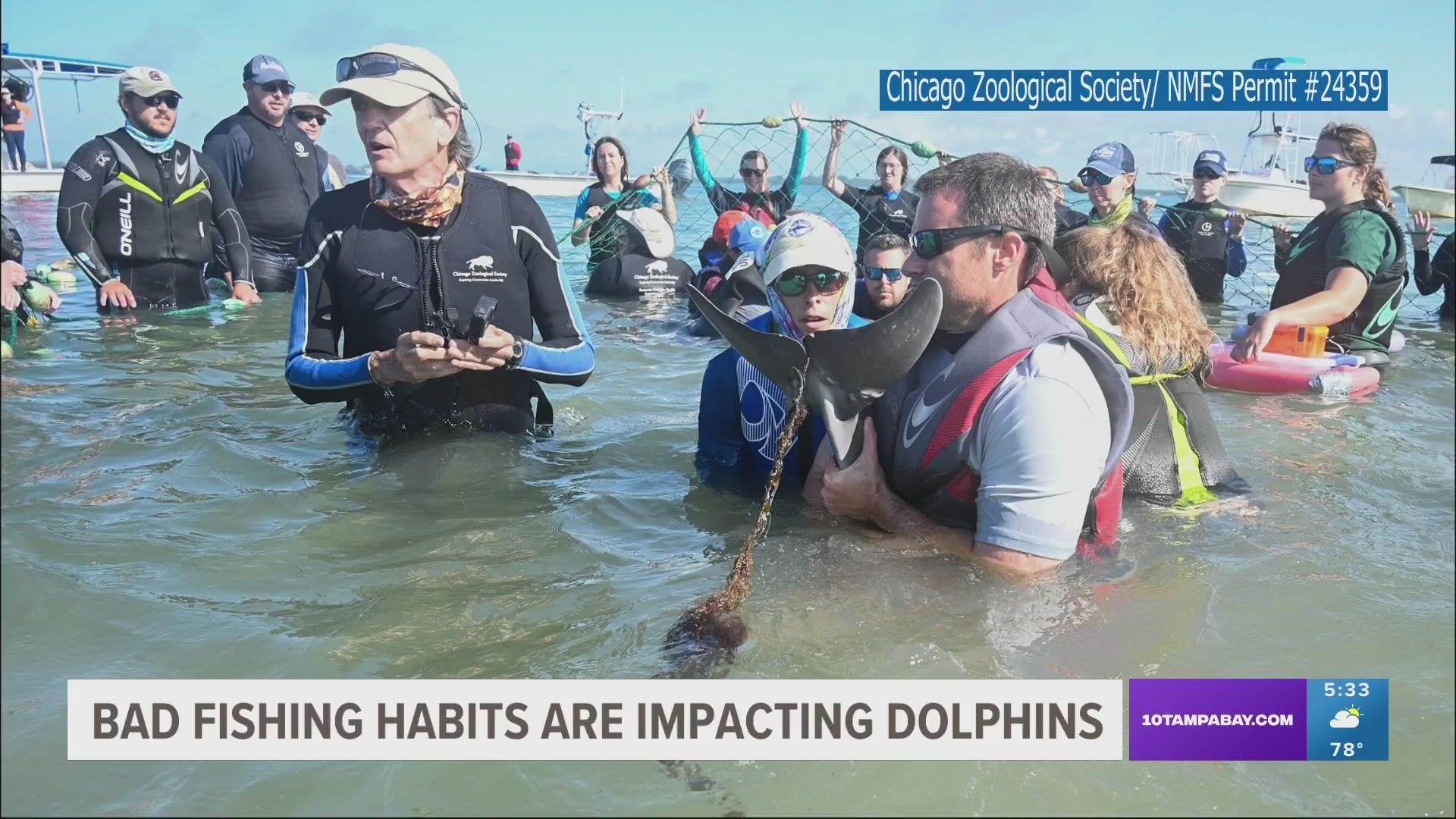SARASOTA, Fla. — A baby dolphin has been freed after it had gotten itself entangled and weighed down by fishing lines in Sarasota Bay. The calf's tail flukes had multiple fishing lines wrapped around them which prevented normal swimming and activities.
"From overhead views that we got with the drone, we saw that this line was cutting deeply into her tail," Randy Wells, the director of the Sarasota Dolphin Research Program at Mote Marine Laboratory, said.
He said the catch and release operation, which happened on Feb. 21, was actually the second leg of the rescue effort for the dolphin which had nearly 10 feet of monofilament and micro-multifilament braided lines.
"Our team was able to remove some of the lines by using a long handle cutting tool with permission from the National Wildlife Fishery Service," Wells explained. "We removed about two meters or about six or seven feet of line from the animal.
"But some remained and the remaining gear required more in the way that following organisms, algae, barnacles, and that sort of thing, had clumped together to act like a sinker, to pull the line farther and farther through the tail."
With special permission from the National Oceanic and Atmospheric Administration's National Marine Fisheries Service, Wells led a team of 51 rescuers and researchers from 11 organizations to rescue the 2-year-old bottlenose dolphin in Sarasota Bay.
It's not clear how long the lines had been on the animal, but it had accumulated a heavy amount of debris which the calf had to drag along as it swam.
"There are two different kinds of fishing lines in here with a lot of growth," Wells explained. "One was just a basic monofilament nylon fishing line, that's you're basic fishing line.
"The other was a braided monofilament that is very strong but it's different fibers that are braided in together so if you look at it under a microscope, it looks like little saw teeth in that braid, and that cuts through really well."
The calf struggled to swim and was unable to use its tail. It had to rely on its mother to get around.
"For mom to pull it along with her slipstream or for its flippers to try to go through the water, that's not doing it would not work in the long term," Wells said.
After rescuers surrounded the pair with a net, veterinarians were able to cut the line, treat the calf's wounds and administer antibiotics to prevent infection.
The rescue mission lasted just under an hour and the calf and its mom were released back into the ocean with satellite monitoring tags to keep track.
Rescuers and researchers said it was just one example of how improper fishing habits have continued to impact our local dolphin population.
According to researchers with Mote Marine Lab's Stranding Investigation Program, about a third of the dolphins that disappear from the Sarasota Bay area end up dead.
The cause of death of 25% of the carcasses they examine is linked to human interaction including entanglements with fishing lines.
"About 19-20% of the dolphins are from entanglements and fishing gear, ingestion and fishing gear or hooking by fishing gear," Wells said.
The organization is urging people to make less contact with marine mammals and make sure they're following safety rules for fishing
"Do what you can to make sure that the dolphins don't have the opportunity to equate your vessel or your fishing spot on the pier with a source of food because once they get food from that source, they'll keep coming back and I'll put them in subsequent generations at risk," he said.
Officials say to stay at least 50 yards away from wild dolphins and don't feed them because that's against the law.
Other causes of injuries and deaths to dolphins include boat and propeller strikes and environmental contaminants.

